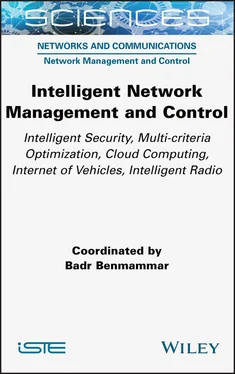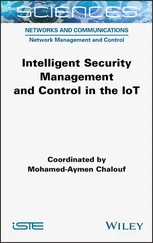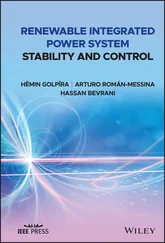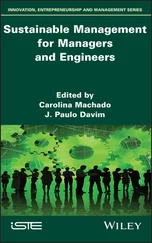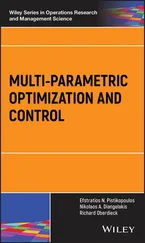1.3.3. Rule-based techniques
Rule-based techniques (Li et al . 2010; Yang et al . 2013) generally involve the application of a set of association rules for data classification. In this context, if a rule stipulates that if event X occurs, then event Y is likely to occur , events X and Y can be described as sets of pairs ( variable, value ). The advantage of using rules is that they tend to be simple and intuitive, unstructured and less rigid. Nevertheless, a drawback is that rules are difficult to preserve and, in certain cases, inadequate for the representation of various types of information.
Turner et al. (2016) developed an algorithm for monitoring the enabled/disabled state of the rules of an intrusion detection system based on signatures. The algorithm is implemented in Python and runs on Snort (Roesch 1999). Agarwal and Joshi (2000) proposed a general framework in two stages for learning a rule-based model (PNrule) in order to learn classifier models on a set of data. They extensively used various distributions of classes in the learning data. The KDD Cups database was used for learning and testing their system.
1.3.4. Machine learning-based techniques
Machine learning can be defined as the capacity of a program to learn and improve the performances of a series of tasks in time. Machine learning techniques focus on the creation of a system model that improves its performances relying on the previous results. Furthermore, it can be said that machine learning–based systems have the capacity to handle the execution strategy depending on the new inputs. The main machine learning techniques are presented in the following sections.
1.3.4.1. Artificial neural networks
Artificial neural networks learn to predict the behavior of various system users. If correctly designed and implemented, neural networks can potentially solve several problems encountered by rule-based approaches. The main advantage of neural networks is their tolerance to inaccurate data and uncertain information and their capacity to deduce solutions without previous knowledge on data regularities. Cunningham and Lippmann (2000) of MIT Lincoln Laboratory conducted a number of tests using neural networks. The system searched for attack-specific key words specific in the network traffic. In Ponkarthika and Saraswathy (2018), a model of intrusion detection system is explored as a function of deep learning. Long–short term memory (LSTM) architecture was applied to a recurrent neural network for the learning of an intrusion detection system using the KDD Cup 1999 dataset.
1.3.4.2. Bayesian networks
A Bayesian network is a probabilistic graphical model representing a set of random variables in the form of an acyclic oriented graph. This technique is generally used for intrusion detection in combination with statistical diagrams. It has several advantages, notably the capacity to code the interdependences between variables and to predict events, as well as the possibility of integrating both previous knowledge and previous data (Heckerman 2008). Its major drawback is that results are comparable to statistical techniques, but this requires additional computation efforts. Kruegel et al. (2003) proposed a multisensor fusion approach using a Bayesian network–based classifier for the classification and cancellation of false alarms, according to which the outputs of various sensors of the intrusion detection system are aggregated to generate a single alarm. Han et al. (2015) proposed an intrusion detection algorithm based on Bayesian networks relying on the analysis into main components. The authors calculate the characteristic data value of the attack on the original network, and then extract the main properties by analysis into main components.
A Markov chain is a random process related to a finite number of states, with memoryless transition probabilities. During the learning phase, probabilities associated with transitions are estimated from the normal behavior of the target system. Detection of anomalies is then achieved by comparing the anomaly score obtained for the sequences observed at a fixed threshold. In the case of a hidden Markov model (Hu et al . 2009; Zegeye et al . 2018; Liang et al . 2019), the system we are interested in is assumed to be a Markov process in which states and transitions are masked. In the literature, several methods have been presented for solving the intrusion detection problem by inspecting the packet headers. Mahoney and Chan (2001) experimented with anomaly detection on DARPA network data by comparing the header fields of the network packet. Several systems use the Markov model for intrusion detection: PHAD (Packet Header Anomaly Detector) (Mahoney and Chan 2001), LERAD (Learning Rules for Anomaly Detection) (Mahoney and Chan 2002a) and ALAD (Application Layer Anomaly Detector) (Mahoney and Chan 2002b). In the book of Zegeye et al. (2018), an intrusion detection system using the hidden Markov model is proposed. The phase of network traffic analysis involves characteristic extraction techniques, reduction of dimensions and vector quantization, which plays an important role in large sets of data, as the amount of data transmitted increases every day. Model performances with respect to the KDD 99 dataset indicate an accuracy above 99%.
1.3.4.4. Support-vector machines
The support-vector machine is a technique used for solving various learning, classification and prediction problems. The support-vector machine was employed in an implementation of the structural risk minimization (SRM) principle of Vapnik (1998), which minimizes the generalization error, in the sense of true error on unseen examples. The basic support-vector machine addresses problems with two classes, in which data are separated by a hyperplane defined by a certain number of support vectors. Support vectors are a subset of learning data serving to define the limit between the two classes. When the support-vector machine cannot separate two classes, it solves this problem by mapping the input data in spaces of high-dimensional functions by means of a kernel function. In a high-dimensional space, it is possible to create a hyperplane enabling a linear separation (which corresponds to a curved surface in the lower input space). Consequently, the kernel function plays an important role in the support-vector machine. In practice, various kernel functions can be used, such as linear, polynomial, or Gaussian. A remarkable property of the support-vector machine is its learning capacity, which does not depend on the dimensionality of the characteristic space. This means that the support-vector machine can generalize when given numerous functionalities. Mukkamala and Sung (2003b) showed the many advantages of the support-vector machine compared to other techniques. Support-vector machines surpass neural networks in terms of upgradability, learning time, runtime and prediction accuracy. Mukkamala and Sung (2003a) also applied support-vector machines for the extraction of intrusion detection characteristics of KDD files. They empirically proved that the functionalities selected using the support-vector machine yielded similar results as the use of a full set of functionalities. This decrease in the number of functionalities reduces the computation efforts. Chen et al. (2005) also proved that support-vector machines surpassed neural networks.
1.3.5. Clustering techniques
Clustering techniques operate by organizing observed data in groups, depending on a given similarity or a distance measurement. Similarity can be measured by using the cosine formula, the binary weighted cosine formula proposed by Rawat (2005) or other formulas. The most commonly used procedure for clustering involves the selection of a representative point for each cluster. Then each new data point is classified as belonging to a given group depending on the proximity to the corresponding representative point. There are at least two approaches for the classification-based detection of anomalies. In the first approach, the anomaly detection model is formed using unlabeled data including both normal and attack traffic. In the second approach, the model is formed using only normal data and a normal activity profile is created. The idea underlying the first approach is that abnormal or attack data represent a small percentage of the total data. If this hypothesis is verified, anomalies and attacks can be detected depending on cluster size: large clusters correspond to normal data and the other data points to attacks. Liao and Vemuri (2002) used the K-nearest neighbor (K-nn) approach, based on the Euclidian distance, to define the belonging of data points to a given cluster. The Minnesota intrusion detection system is a network-based anomaly detection approach that uses data exploration and clustering techniques (Levent et al . 2004).
Читать дальше
